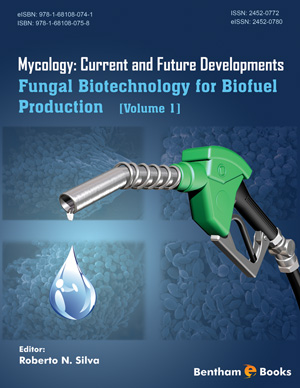Abstract
The most important challenges for conversion of lignocellulosic plant biomass into bioproducts are to overcome its recalcitrance and to reduce steps needed for its biorefining. Conventionally, conversion is carried out using pretreatment followed by the hydrolysis of biomass to monomer sugars that are fermented into different bioproducts. Fungi are able to efficiently degrade biomass by secreting enzymes as well as they are capable of producing a wide range of compounds of commercial interest such as organic acids. The hydrolysis of lignocellulosic biomass requires an efficient cocktail of hydrolytic enzymes, especially cellulases. Commonly, effective cellulases from Trichoderma reesei monoculture are supplemented with separately produced beta-glucosidases from Aspergillus niger. Fungal consortia, resembling microbial combinations synergistically degrading lignocellulosic substrates in nature, may be excellent systems for on-site production of a cocktail of lignocellulolytic enzymes in a single reactor in a biorefinery. Taking this a step further, consolidated bioprocessing has been suggested as an efficient and economical method of manufacturing bioproducts from lignocellulose. The main idea in consolidated bioprocessing is that hydrolysis and fermentation are integrated into a single process, thereby significantly reducing the amount of steps in the biorefinery. A further advance is to also integrate biological pretreatment of biomass in the consolidated process. However, it is not clear whether this would be accomplished more efficiently with microbial consortia or a single organism. Also, biological pretreatment of biomass is still under development. This chapter highlights examples of fungal consortia for production of enzymes and bioproducts, and discusses development of symbiotic mixed cultures for consolidated bioprocessing.
Keywords:
Biological pretreatment, biorefinery, consolidated-bioprocessing, fungal consortia, on-site enzyme production.


 Download PDF Flyer
Download PDF Flyer